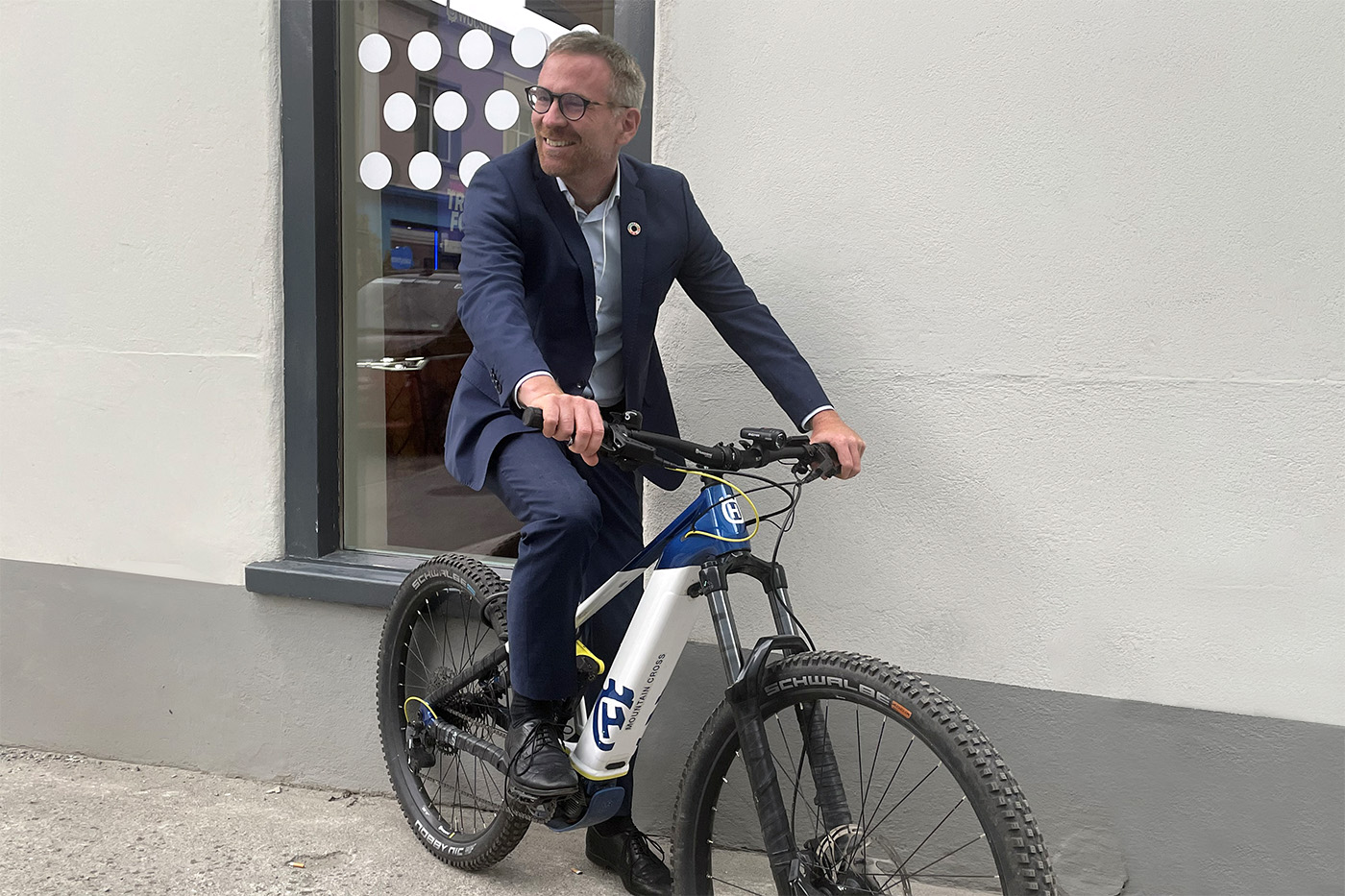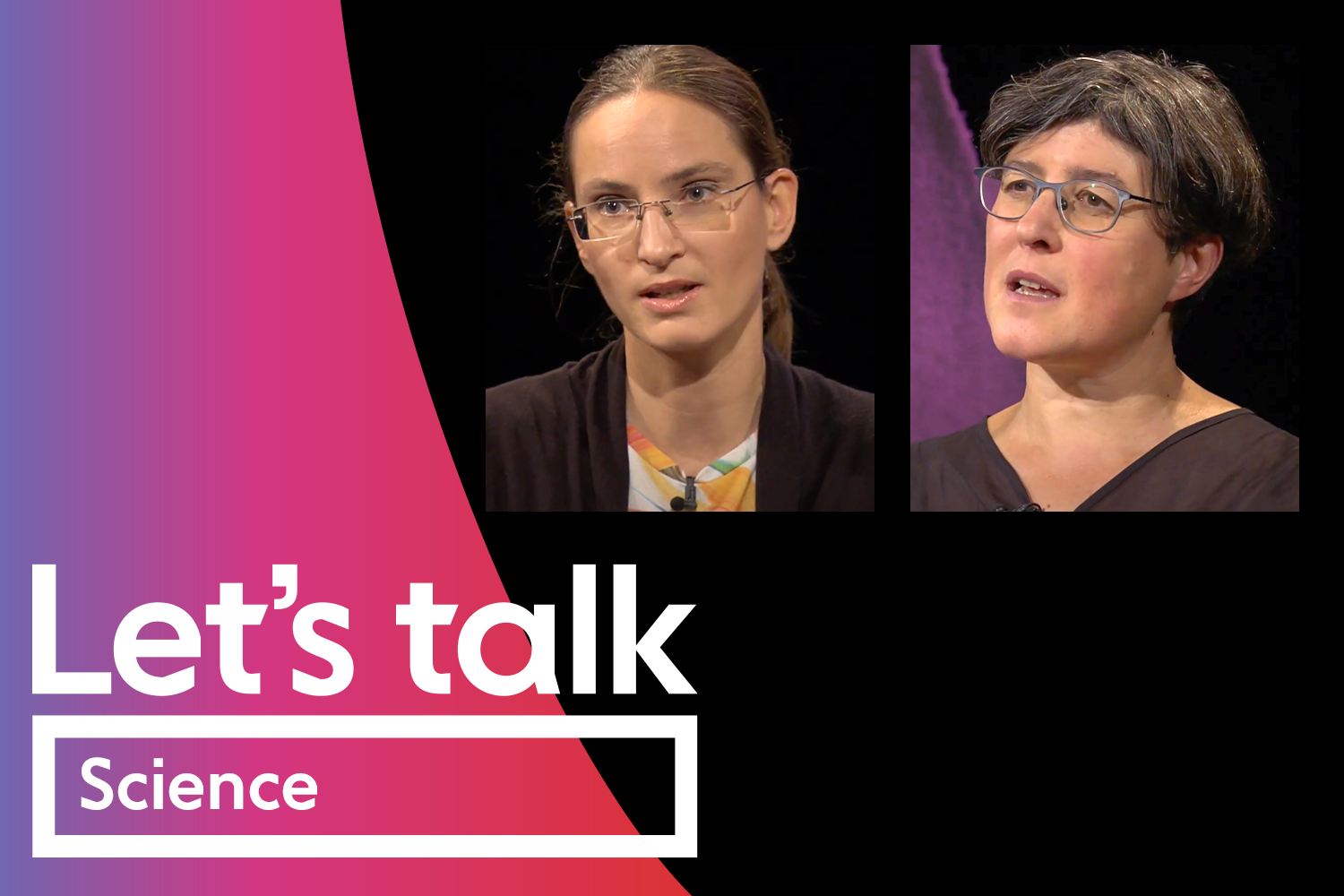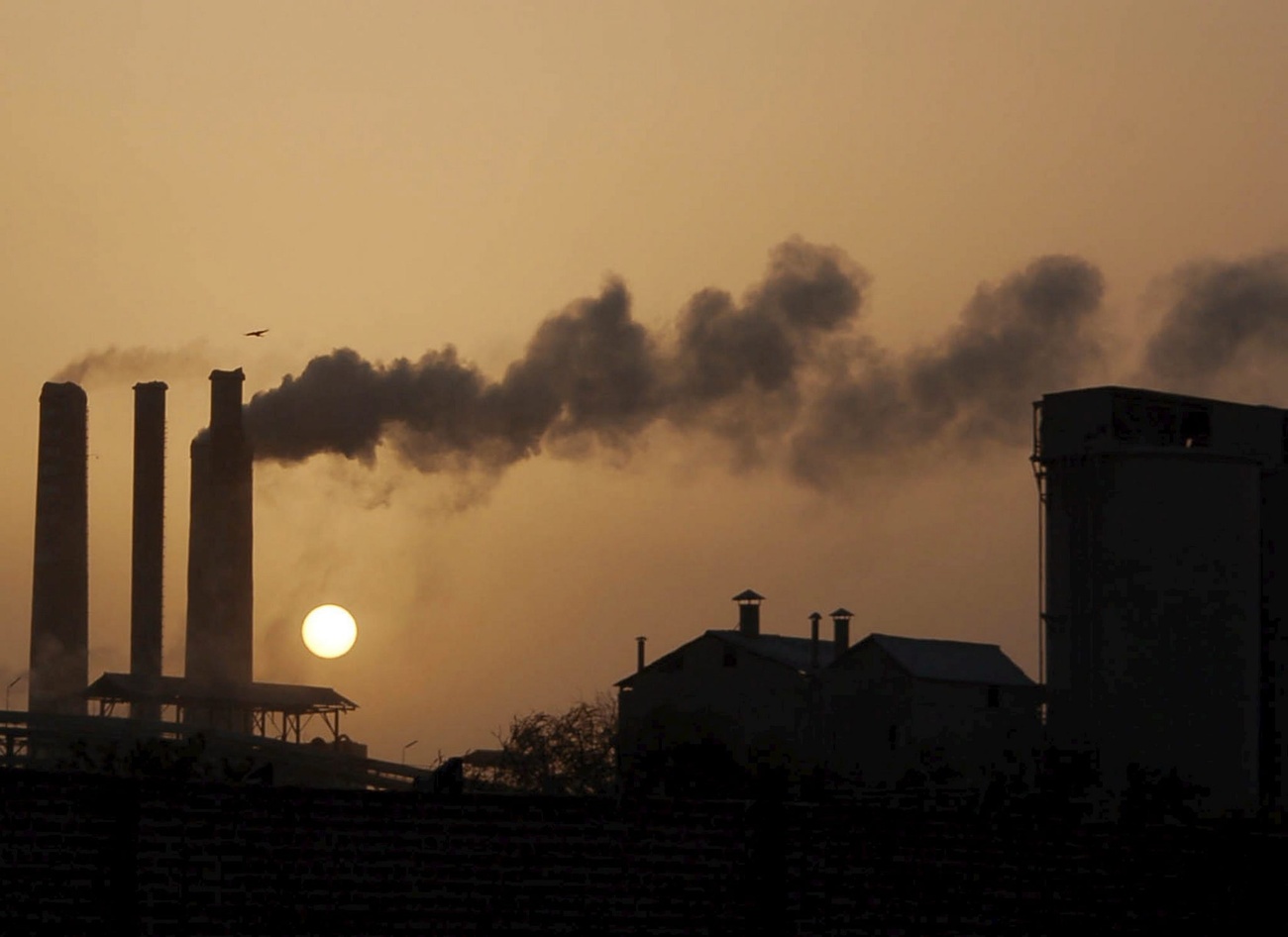South Pole: the fairy godmother of ‘green’ wishes

Swiss firm South Pole is a shining star in a growing constellation of companies offering climate policy solutions. The Zurich-based company helps companies set their sustainability strategies including through carbon credits. The latter are viewed by some as legitimate tools to combat climate change and others as the new frontier in greenwashing.
Lofty net-zero goals to cut greenhouse gas emissions – whether set by countries or companies – are not translating into the action needed to meet the 1.5°C target set out by the Paris Agreement to limit global warming. Scientists say there is a 50:50 chanceExternal link the planet will surpass this critical threshold.
“We are in the fight of our lives and we are losing,” United Nations Secretary-General António Guterres warned at the climate summit COP27 underway in Egypt. “And our planet is fast approaching tipping points that will make climate chaos irreversible… We are on a highway to climate hell with our foot on the accelerator.”
There are some good news though. More than 1,500 companies are today part of the Science Based Targets initiative, which helps align corporations’ climate strategies with the 1.5°C goal and about 70% of the global economy is covered by net-zero pledges, according to The EconomistExternal link. The bad news: nearly all companies will fail to meet such commitments if they don’t at least double the pace of emissions reduction by 2030, projects AccentureExternal link.
“Setting a target is not good enough,” South Pole CEO Renat Heuberger told SWI swissinfo.ch earlier this year during the World Economic Forum in Davos. “There’s a risk. When companies set a 2050 net-zero target, that’s beyond any CEO’s lifetime. A CEO setting a 2050 target without science-based milestones to get there, without being very clear what the path is, will never be held accountable for that because he’s going to be long gone for sure.”
Start-ups like South Pole, which helps companies achieve their CO2 reduction goals, have thrived on the back of corporate demand for carbon offsetting solutions. Offsetting allows polluting countries or companies to purchase carbon credits to offset their own greenhouse gas emissions. The money is then funneled to projects around the globe that prevent or remove the equivalent amount of carbon. Critics say companies use offsetting as the easy-to-go-to solution to reduce their environmental impact: buying credits allows them to reduce emissions without radically altering their production processes.
Today the Switzerland-based company claims to offer the world’s largest portfolio of carbon projects “to protect the planet and transform lives”. It boasts about 1000 projects in 54 countries. That adds about to about 50 million tons of CO2 per year–roughly the annual emissions of Switzerland, according to Heuberger. Swiss clients include food giant Nestlé, reinsurer Swiss Re, the banks UBS and LGT, online shop Digitec Galaxus, and supermarket chains COOP and Migros.
Heuberger says companies should take responsibility for and offset all of their emissions today. If a company has 1 million tonnes of annual greenhouse gas emissions and has to pay $15 per ton, then that would amount to a $15 million price tag. “Start pricing your carbon emissions,” he stresses. “If your company is not even doing that, sometimes I struggle to take these long-term commitments very seriously. Because why would you do it? It’s just a target.”

Digitec Galaxus, the Swiss e-commerce retailer, reached out to South Pole to develop a carbon neutral checkout solution. This allows customers to get a product-specific CO2 emission at checkout and gives them the opportunity to spend a bit more to offset that emission. For example, to “fully” offset the emissions linked to CHF1700 e-bike, a consumer can opt to pay an additional CHF2.6 at checkout.
“We do not believe in sugarcoating things,” says Toby Billeter, head of corporate communications at Digitec Galaxus. “We believe in facts. That’s what we try to offer to our customers. Compensating is one way of showing the facts: how much carbon oxides emit when buying a mixer or a frying pan. It’s information we want to give to our customers, to give them a choice.”
A carbon offset costs the company about CHF22 ($23) per ton of CO2 so the amount the consumer pays to offset his or her purchase is a tiny fraction of that. The money goes towards climate protection projects in the South Pole portfolio, usually in Africa, Asia or South America, because these are perceived as “cost-efficient” regions: buying credits there is cheaper than in Europe. Digitec Galaxus’s clients –in Switzerland, Austria and Germany – have spent about CHF1.6 million in climate protection in 12 months. One in ten online orders placed by Swiss customers compensated for emissions.
Digitec Galaxus worked with South Pole to calculate its own carbon footprint and began offsetting emissions as of January 2022. It aims to cut half of all its greenhouse gas emission by 2030 – switching to renewable energies, optimising carbon packaging and making use of “climate-neutral” shipping, among other measures. Its mantra: do your best, compensate the rest. The company did not communicate on the ratio of offsetting in its overall environmental strategy.
Greenwashing carbon footprints
Carbon credits are not without controversy because they function like a permission slip for polluters and have for years been on the radar of environmental NGOs, which say they can actually do more harm than good.
“Companies have gotten into greenwashing troubles by over-relying on offsets to accomplish their emission reductions goals,” notes Tani Colbert-Sangree of the Greenhouse Gas Management Institute.
One of the issues is that there is no global overarching regulatory framework for carbon offsets. Part of the challenge to regulate credits is that there two kinds of carbon markets: compliance-based and voluntary markets. The compliance markets include the European Emissions Trading System (EU ETS), to which Switzerland is linked, the United Nations Clean Development Mechanism and what is known as Article 6 market mechanisms that are under discussions at COP27. The Paris Agreement’s Article 6 sets out principles for how countries can pursue voluntary cooperation to reach their climate targets but a detailed agreement on implementation could take years.

More
Let’s Talk: polar research and our struggling planet
The voluntary carbon market is geared towards corporate buyers enabling them to offset their own emissions through carbon credits drawn from projects targeted at removing or reducing greenhouse gas from the atmosphere. These projects are certified by programmes like Verra VCS, Gold Standard, the American Carbon Registry and the Climate Action Reserve. These actors facilitate third party verification, issue carbon credits and track them on public registries.
“The concerns around offsets generally fall into two camps,” says Colbert-Sangree. “One is do offsets actually reduce emissions? The other is: are companies using them responsibly, meaning: are offset credits being used as a last resort?”
“Additionality” is the main supply side concern. In other words, do carbon offsets have environmental integrity and represent greenhouse gas emission reductions that wouldn’t have happened without a market for offset credits? Some projects can do great things but may already have been incentivised to happen, notes Colbert-Sangree. For example, many renewable energy projects generate enough money from selling power that they would move forward even without the added revenue from selling carbon credits.
The second set of concerns comes from the demand side. Are companies really focusing on all the emissions reductions they can accomplish within their business model and across their value chain? Are they using carbon offsets only as a last resort for the emissions that cannot be reduced or replaced with other energy sources? “This is the concept of the ‘mitigation hierarchy’ and is seen as the best practice for using offset credits,” he explains.
Another challenge with carbon credits, he notes, is that the majority of the credits that are available today come from renewable energy and forestry projects. These two project types tend to have the higher risks of not fulfilling environmental integrity and definitively reducing emissions, as they claim to do and as a carbon offset climate policy tool necessitates. Storing CO2 in trees does not necessarily cause a permanent reduction in atmospheric levels of the gas, as trees can release the stored carbon through logging, fire, pest, or disease; carbon emitted by fossil fuel combustion stays in the atmosphere for thousands of years. Some offsets have been linked to forests that were not even threatened.
“Because these two project types represent about 70 to 75% of the overall market, it paints this pretty awful picture of carbon credits,” he says. “There’s a lot of room for improvement. There needs to be a fine tuning, a honing of what credits are so that we can find those high-quality projects and really define what an offset credit represents.”
Cause for alarm?
The environmental group Friends of the Earth views the thousands of net-zero targets that have been adopted by corporations and countries in recent years with alarm. It cautions there is simply not enough land to meet the demand for carbon offsets built into these net zero targets and that this will lead to land grabbing, further threatening forest communities and the environment.
The NGO suggests for instance that Nestlé would need to offset 13 million tonnes of greenhouse gas emissions per year by 2050 to fulfil the carbon neutral roadmap it developed with South Pole, “roughly the total annual emissions for a small country like Latvia”, it says in a reportExternal link. “Nestlé meeting its stated ambition could require planting trees on at least 4.4 million hectares of lands every year.”
“The net-zero concept has been completely co-opted and stolen,” says Kirtana Chandrasekaran, the NGO’s international programmes coordinator, speaking from Cairo where she was attending COP27.
The previous edition of the climate summit, COP26 held in Glasgow, delivered a broad-brush agreement that carbon offsets could be used by countries to achieve their climate targets. Technical discussion on how this will play out are part of the agenda at COP27. But she believes carbon offsets should not be in the agenda at all.
“Offsets are worse than doing nothing,” she says. “We are very worried. Not only do we see companies like South Pole as not providing a climate solution at all, but in fact as very dangerous because carbon markets allow emissions to continue and even increase while grabbing forests, and farming lands.”
South Pole insists carbon offsetting is necessary. For many companies, especially heavy emitters, getting to net zero emissions will take years if not decades to achieve. Attaching cost to their emissions creates an incentive for faster change. It also points out that carbon financing allows projects to take off in countries such as Zimbabwe where they would not access bank loans or government funding, so they are an added boon to global climate goals.
“All companies need to take responsibility for the emissions they have today by compensating for them,” the company says. “This is done through offsetting – there is no other way. By buying carbon offsets, you are investing in a project somewhere else that is reducing emissions right now, so the net effect of your emissions on the climate is zero.”
South Pole began as a start-up founded by five young social entrepreneurs in Zurich in 2006. Today it claims to offer the world’s largest portfolio of carbon projects “to protect the planet and transform lives”.
The company evolved from a student project: myclimate, a foundation created to help companies understand their carbon footprint and offset their emissions twenty years ago. The founders then left the NGO and created a “profit for purpose” company called South Pole. There was demand already back then but practically no projects generating carbon credits, says Heuberger. South Pole was created to fill that gap. It develops and supports projects that aim to lower global greenhouse emissions in many countries around the world.
Business has boomed in the wake of the Friday for Futures movement, spurred by Swedish environmentalist Greta Thunberg. Unexpectedly, the Covid-19 pandemic gave the company another boost. That’s due to the growing realisation in the business world that the climate crisis is interlinked to all other challenges, according to South Pole’s CEO. “Over the last few years, we started to become more active in full decarbonization and net-zero journeys for companies,” Heuberger told SWI.
South Pole’s calling is to help companies large and small embark on their “climate journeys”. That involves calculating the company’s scope 1, 2 and 3 emissions; lowering those emissions and offsetting all remaining emissions. (Scope 1 refers to direct emissions from company-owned or controlled sources; Scope 2 encompasses indirect emissions from the generation of purchased energy; and Scope 3 emissions are a consequence of a company’s activities but not within its direct control).
South Pole now has 37 offices around the world. Clients come from all corners, including Australia, Japan, Colombia and increasingly the United States.
In Switzerland, the company has worked with an array of clients, including Nestlé, helping it craft its net-zero strategy. It also worked with Lafarge Holcim to develop low carbon cement, Cornercard to offer a “carbon-neutral” credit card, and the Mediterranean Shipping Corporation to calculate the emissions of different freight routes and give clients the option to offset their emissions.
Edited by Virginie Mangin

In compliance with the JTI standards
More: SWI swissinfo.ch certified by the Journalism Trust Initiative












You can find an overview of ongoing debates with our journalists here . Please join us!
If you want to start a conversation about a topic raised in this article or want to report factual errors, email us at english@swissinfo.ch.